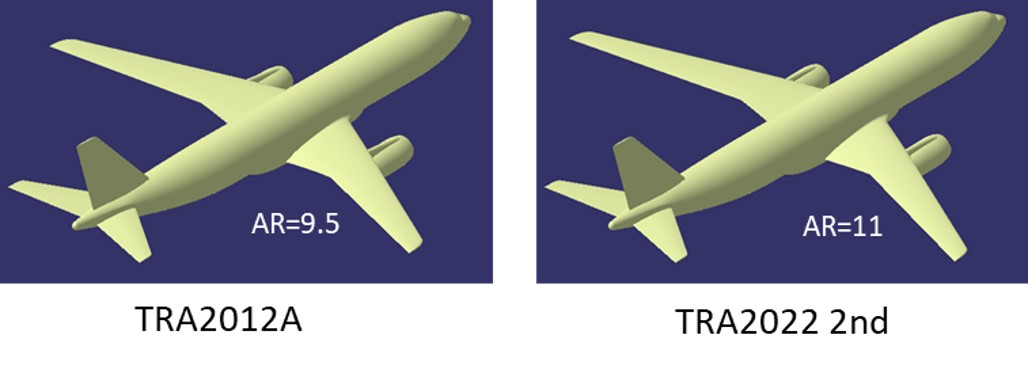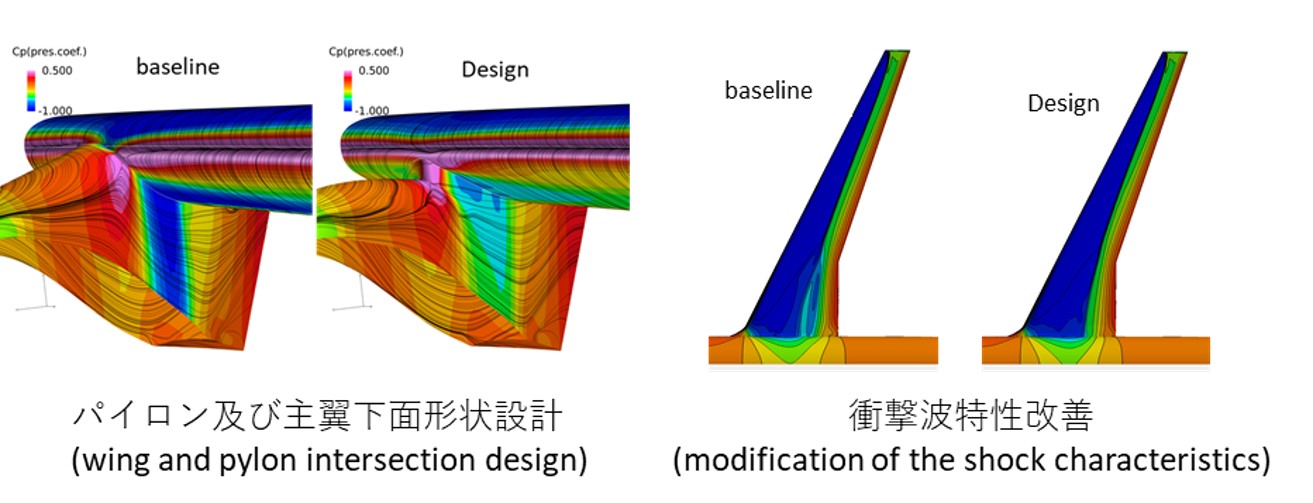Environment Conscious Aircraft Systems Research in Eco-wing Technology:Aerodynamic System Design Technology
JAXA Supercomputer System Annual Report April 2017-March 2018
Report Number: R17EA0601
Subject Category: Aeronautical Technology
- Responsible Representative: Yoshikazu Makino, Aeronautical Technology Directorate Next Generation Aeronautical Innovation Hub Center
- Contact Information: Dongyoun Kwak kwak.dongyoun@jaxa.jp
- Members: Yoshihisa Aoki, Mitsuhiro Murayama, Dongyoun Kwak, Naoko Tokugawa, Takashi Atobe, Tatsunori Yuhara, Fumitake Kuroda, Yoshine Ueda, Keisuke Ohira, Hikaru Aono, Kisa Matsushima, Satoshi Kondo, Tohru Hirai, Kentaro Tanaka, Takashi Matsuno, Sasamori Monami, Shinsuke Nishimura, Minoru Yoshimoto, Kazuhiro Kubota
Abstract
Innovative drag reduction technologies are investigated to reduce the fuel consumption for a conventional aircraft configuration. Aircraft noise prediction technologies and the conceptual design technologies are also developed for future aircraft which achieve low noise and high efficiency.
Reference URL
Please refer to ‘Eco-wing technology | ECAT – Environment-Conscious Aircraft Technology Program | Aeronautical Technology Directorate‘.
Reasons for using JSS2
CFD analysis are used for the understanding of aerodynamic characteristics and evaluation of the performance in the aircraft design phase. Huge calculation resources and costs were required for the high fidelity and quick response CFD analysis for the optimum aerodynamic design process on complex aircraft geometry. JSS2 can achieve those requirements, the cost and time are drastically saved on the CFD analysis.
Achievements of the Year
Aerodynamic design of the TRA2022 (JAXA Technology reference Aircraft) was performed to reduce the drag on the cruise flight using CFD analysis(Fig.1).
The second configuration of the TRA2022 were designed by applying several drag reduction concepts and know-hows(Fig.2). At first, a low drag airfoil which can reduce not only the friction drag but also the pressure drag was derived from the NLF design process. The low drag airfoil was chosen on the TRA2022, and the twist angle of the main wing was optimized to reduce induced drag by controlling the lift distribution. The shock induced separation on the pylon was restricted by modify the wing lower surface and the pylon geometries. Also, shock characteristics on the upper surface caused by the wing body interaction were improved. Comparing with the TRA2012A, 10% of the drag reduction were obtained on the 2nd configuration of TRA2022.
Publications
N/A
Usage of JSS2
Computational Information
- Process Parallelization Methods: MPI
- Thread Parallelization Methods: OpenMP
- Number of Processes: 15 – 300
- Elapsed Time per Case: 5.00 hours
Resources Used
Fraction of Usage in Total Resources*1(%): 0.96
Details
Please refer to System Configuration of JSS2 for the system configuration and major specifications of JSS2.
| System Name | Amount of Core Time(core x hours) | Fraction of Usage*2(%) |
|---|---|---|
| SORA-MA | 7,366,417.13 | 0.97 |
| SORA-PP | 79,733.34 | 1.00 |
| SORA-LM | 46.53 | 0.02 |
| SORA-TPP | 0.00 | 0.00 |
| File System Name | Storage Assigned(GiB) | Fraction of Usage*2(%) |
|---|---|---|
| /home | 803.85 | 0.56 |
| /data | 48,805.53 | 0.90 |
| /ltmp | 19,594.81 | 1.48 |
| Archiver Name | Storage Used(TiB) | Fraction of Usage*2(%) |
|---|---|---|
| J-SPACE | 9.15 | 0.39 |
*1: Fraction of Usage in Total Resources: Weighted average of three resource types (Computing, File System, and Archiver).
*2: Fraction of Usage:Percentage of usage relative to each resource used in one year.
JAXA Supercomputer System Annual Report April 2017-March 2018




